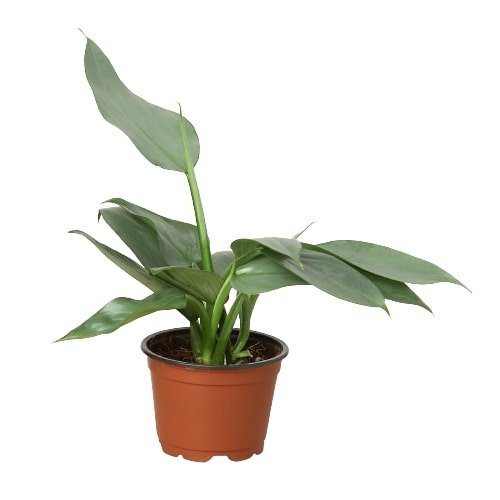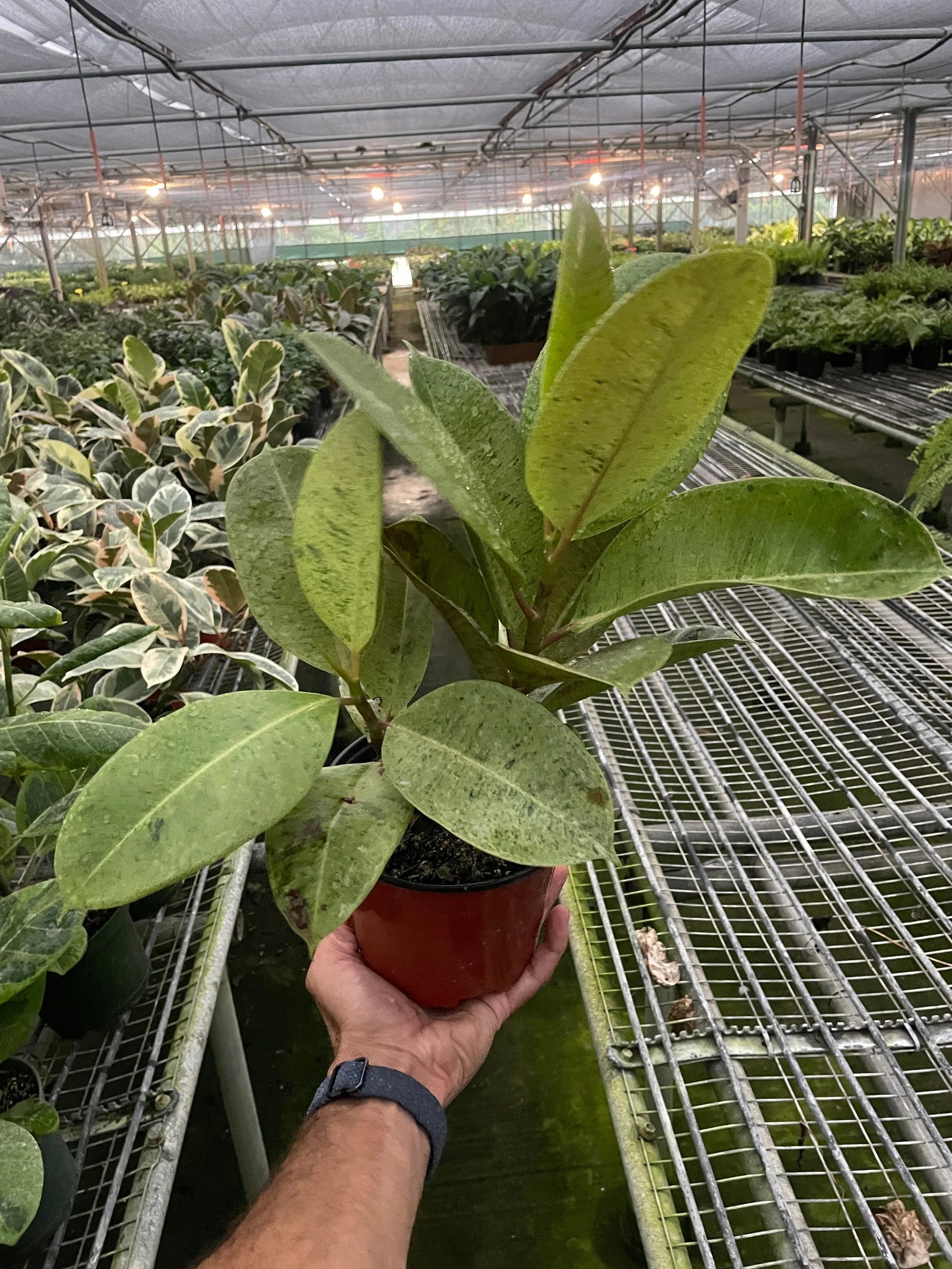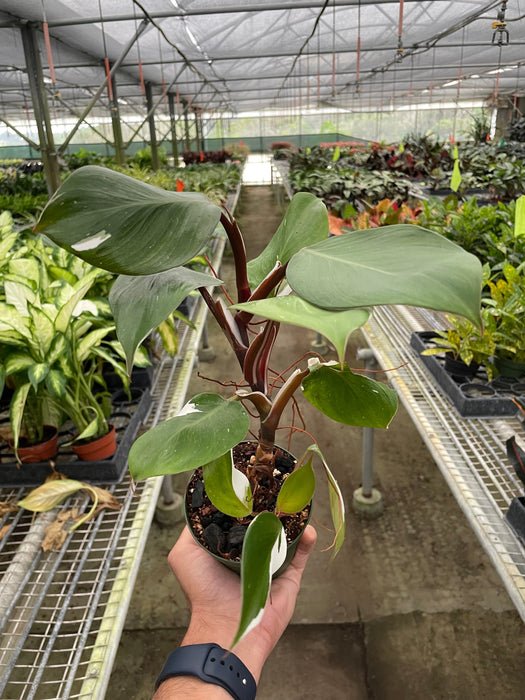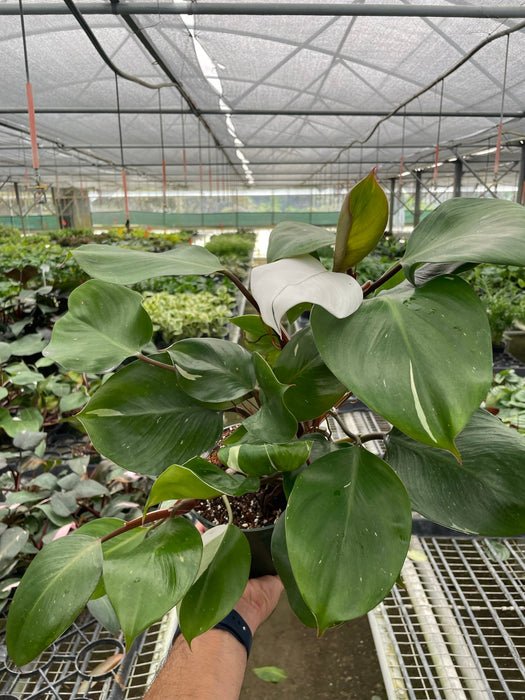 Image 1 of 2
Image 1 of 2

 Image 2 of 2
Image 2 of 2

Philodendron 'Silver Sword' Houseplant
Philodendron 'Silver Sword' Houseplant — stands out with its striking silver-hued, sword-shaped leaves that bring a touch of elegance to any indoor space. Renowned for its air-purifying qualities and low-maintenance nature, it makes for an exceptional houseplant, effortlessly enhancing your home while promoting a healthier environment.
Botanical Classification: Philodendron hastatum
Common Name: Philodendron 'Silver Sword’
CARE GUIDE:
Light. Adaptable to low light conditions, but it thrives and develops more leaves when placed in medium or bright indirect light. Avoid direct sunlight, as it may cause foliage burn.
Water. To ensure proper hydration for your Philodendron, water it when the top half to three-quarters of the soil feels dry. When watering, continue until you see excess water draining out of the pot's bottom hole, and be sure to empty any collected water in the saucer to prevent overwatering.
Humidity. Your Philodendron will fare well in standard household humidity levels, but embracing higher humidity can promote the growth of larger leaves. Occasional misting can also be beneficial for your plant, enhancing its overall health and vitality.
Toxicity. Non-toxic and pet-friendly.
Additional Care. To keep your Philodendron in top condition, regularly remove any leaves and stems that are dead, discolored, damaged, or diseased. It's important to use clean, sharp scissors for this task to prevent tearing or bruising the stems, making cuts just above a leaf node. Regularly washing the leaves is also beneficial, as it prevents dust from clogging the plant's pores. If you're interested in propagation, the ideal time is during spring or early summer. Simply take stem tip cuttings and place them in water or moist soil; they should root with ease.
Philodendron 'Silver Sword' Houseplant — stands out with its striking silver-hued, sword-shaped leaves that bring a touch of elegance to any indoor space. Renowned for its air-purifying qualities and low-maintenance nature, it makes for an exceptional houseplant, effortlessly enhancing your home while promoting a healthier environment.
Botanical Classification: Philodendron hastatum
Common Name: Philodendron 'Silver Sword’
CARE GUIDE:
Light. Adaptable to low light conditions, but it thrives and develops more leaves when placed in medium or bright indirect light. Avoid direct sunlight, as it may cause foliage burn.
Water. To ensure proper hydration for your Philodendron, water it when the top half to three-quarters of the soil feels dry. When watering, continue until you see excess water draining out of the pot's bottom hole, and be sure to empty any collected water in the saucer to prevent overwatering.
Humidity. Your Philodendron will fare well in standard household humidity levels, but embracing higher humidity can promote the growth of larger leaves. Occasional misting can also be beneficial for your plant, enhancing its overall health and vitality.
Toxicity. Non-toxic and pet-friendly.
Additional Care. To keep your Philodendron in top condition, regularly remove any leaves and stems that are dead, discolored, damaged, or diseased. It's important to use clean, sharp scissors for this task to prevent tearing or bruising the stems, making cuts just above a leaf node. Regularly washing the leaves is also beneficial, as it prevents dust from clogging the plant's pores. If you're interested in propagation, the ideal time is during spring or early summer. Simply take stem tip cuttings and place them in water or moist soil; they should root with ease.
Philodendron 'Silver Sword' Houseplant — stands out with its striking silver-hued, sword-shaped leaves that bring a touch of elegance to any indoor space. Renowned for its air-purifying qualities and low-maintenance nature, it makes for an exceptional houseplant, effortlessly enhancing your home while promoting a healthier environment.
Botanical Classification: Philodendron hastatum
Common Name: Philodendron 'Silver Sword’
CARE GUIDE:
Light. Adaptable to low light conditions, but it thrives and develops more leaves when placed in medium or bright indirect light. Avoid direct sunlight, as it may cause foliage burn.
Water. To ensure proper hydration for your Philodendron, water it when the top half to three-quarters of the soil feels dry. When watering, continue until you see excess water draining out of the pot's bottom hole, and be sure to empty any collected water in the saucer to prevent overwatering.
Humidity. Your Philodendron will fare well in standard household humidity levels, but embracing higher humidity can promote the growth of larger leaves. Occasional misting can also be beneficial for your plant, enhancing its overall health and vitality.
Toxicity. Non-toxic and pet-friendly.
Additional Care. To keep your Philodendron in top condition, regularly remove any leaves and stems that are dead, discolored, damaged, or diseased. It's important to use clean, sharp scissors for this task to prevent tearing or bruising the stems, making cuts just above a leaf node. Regularly washing the leaves is also beneficial, as it prevents dust from clogging the plant's pores. If you're interested in propagation, the ideal time is during spring or early summer. Simply take stem tip cuttings and place them in water or moist soil; they should root with ease.






